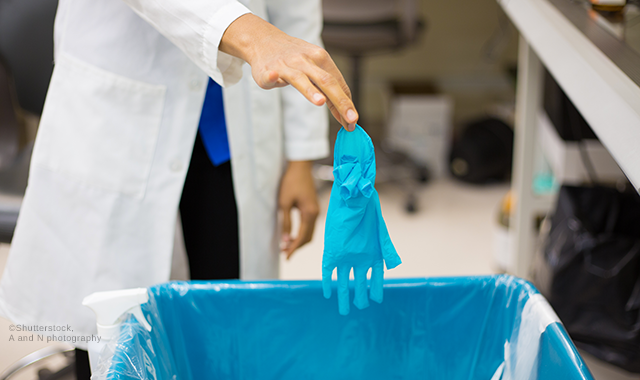5 infection control mistakes you may be making and not even realize
As hygienists, infection control and the safety of our patients is a top priority. But are you and your office up to date on infection control protocols and required infection control training? Here are five infection control mistakes you might be making and not even realize.

As dental professionals, infection control and the safety of our patients is a top priority. But are you and your office up to date on infection control protocols and required infection control training?
Just because you or your office has always done something a certain way, doesn’t necessarily make it correct. Protocols and best practices are constantly changing. For the safety of our patients, and even ourselves as clinicians, reviewing infection control protocols needs to be at the forefront of our priorities. Here are five infection control mistakes you might be making and not even realize.
References
1) Blue, C.M. (2017). Darby’s Comprehensive Review of Dental Hygiene (8th ed.). St Louis, MO: Elsevier.
2) Centers for Disease Control and Prevention. (2016, March). Summary of Infection Prevention Practices in Dental Settings: Basic Expectations for Safe Care.
3) Chin J.R., Miller C.H., Palenik, C.J. (2006). Internal contamination of air-driven low-speed handpieces and attached prophy angles. J Am Dent Assoc. 137(9):1275-80. Retrieved from http://www.ncbi.nlm.nih.gov/pubmed/16946433
4) Dierschke, H., Tuttnauer Service Manager. (2016, April 22). Personal communication: email.
5) Herd S., Chin J., Palenik C.J., Ofner S. (2007) The in vivo contamination of air-driven low-speed handpieces with prophylaxis angles. J Am Dent Assoc. 138(10):1360-5. Retrieved from http://www.ncbi.nlm.nih.gov/pubmed/17908851
6) Hopkins, S., SciCan Technician. (2016, April 22). Personal communication: phone interview.
7) Kohn, W.G., Collins, A.S., Cleveland, J.L., Harte, J.A., Eklunt, K.J., Malvitz, D.M. Center for Disease Control and Prevention. Guidelines for Infection Control in Dental Health-Care Settings – 2003. MMWR 2003; 52 (Report No. 17). Retrieved from http://www.cdc.gov/mmwr/PDF/rr/rr5217.pdf
8) M9/M11 UltraClave Sterilizer User Guide: Models M9 (-020/-021 -022), M9D (-022), M11 (-020 / -021 / -022). (02-11-2016). Midmark, Versailles, Ohio. Retrieved from http://www.midmark.com/docs/librariesprovider6/pdfs/003-2707-99.pdf?sfvrsn=8
9) Molinari, J.A., Nelson, P. (2016). Environmental Surface Cleaning and Disinfection: Effects of Alcohol Concentration. (Report No. 27). Ann Arbor, Michigan: The Dental Advisor.
10) Organization for Asepsis and Prevention (OSAP). CDC Guidelines: From Policy to Practice. Retrieved from http://laneykay.com/wp-content/uploads/2015/06/instrumentProcessingOSAP.pdf
11) Rutala, W.A., Weber, D.J., the Healthcare Infection Control Practices Advisory Committee. Center for Disease Control and Prevention. (2008) Guideline for Disinfection and Sterilization in Healthcare Facilities, 2008.
12) United States Department of Labor, Occupational Safety & Health Administration. (2012, April). Bloodborne Pathogens. Retrieved from https://www.osha.gov/pls/oshaweb/owadisp.show_document?p_table=STANDARDS&p_id=10051
Maximizing Value: The Hidden Benefits of Preventing Hospital-Acquired Pneumonia Through Oral Hygiene
September 10th 2024Originally posted on Infection Control Today. Hospital-acquired pneumonia (HAP) is a significant infection prevention concern, leading to high patient mortality, increased health care costs, and ICU usage. Oral hygiene is an effective preventive measure.